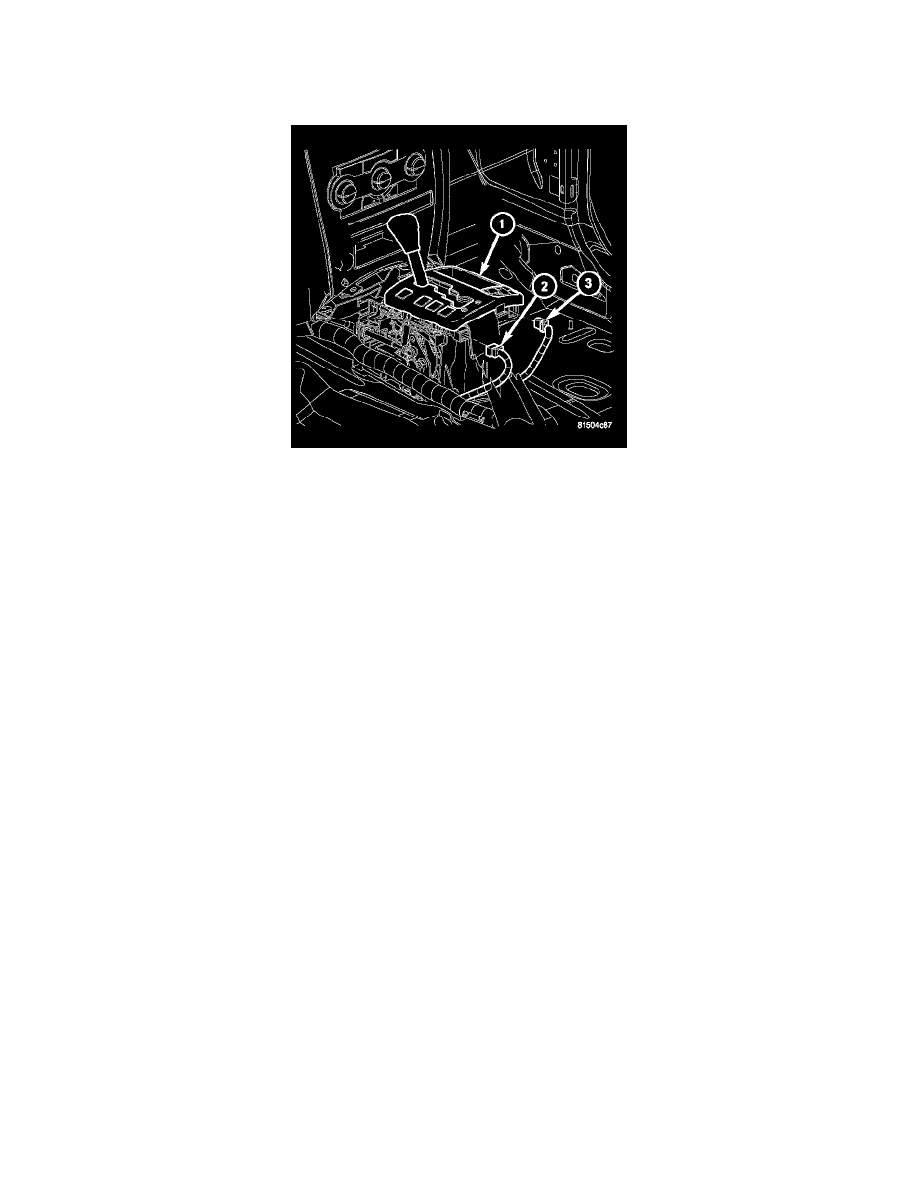Commander 4WD V8-4.7L VIN N (2006)

Shifter A/T: Description and Operation
MECHANISM-SHIFT
DESCRIPTION
The automatic transmission is operated with the help of a shift lever assembly (SLA) (1) located in the floor console. There are four positions to which
the selection lever can be shifted: P, R, N, D. In addition, the selector lever can be moved sideways (+/-) in position "D" to adjust the shift range.
All selector lever positions are identified by the SLA and transmitted by a shift cable to the selector shaft in the transmission.
The SLA is comprised of the following functions:
Key lock: Depending on the selector lever position, the ignition cylinder is locked/unlocked, i.e., the ignition key can be removed only if the selector
lever is in position "P". A park lock cable is used to perform this function.
Park lock: The selector lever is not released from position "P" until the brake pedal has been applied and the ignition key is in "ACC or ON" positions.
Shift lock is controlled by the brake light switch in conjunction with a locking solenoid in the SLA. As soon as the brake pedal is applied firmly, the
locking solenoid is de-energized to unlock the selector lever.
OPERATION
With the selector lever in position "D", the transmission control module (TCM) automatically shifts the gears that are best-suited to the current
operating situation. This means that shifting of gears is continuously adjusted to current driving and operating conditions in line with the selected shift
range and the accelerator pedal position. Starting off is always performed in 1st gear.
The current selector lever position or, if the shift range has been limited, the current shift range is indicated in the instrument cluster display.
The permissible shifter positions and transmission operating ranges are:
-
P = Parking lock and engine starting.
-
R = Reverse.
-
N = Neutral and engine starting (no power is transmitted to the axles).
-
D = The shift range includes all forward gears.
The shift range can be adjusted to the current operating conditions by tipping the selector lever to the left-hand side ("-") or the right-hand side ("+")
when in position "D". If the shift range is limited, the display in the instrument cluster indicates the selected shift range and not the currently engaged
gear.
-
4= Shift range is limited to 4th gear.
-
3= Shift range is limited to 3rd gear.
-
2= Shift range is limited to 2nd gear.
-
1= Shift range is limited to 1st gear.
Tipping the shift lever will have the following results:
-
Tipping the selector lever toward %" one time after another: The shift range is reduced in descending sequence by one gear each time, i.e., from D
- 4 - 3 - 2 - 1. If the selected limitation of the shift range would result in a downshift causing excessive engine speed, the shifting is not executed
and the engaged gear as well as the shift range remain unchanged. This is to prevent the engine from overspeeding. Engine retardation is low with
the selector lever in position "D". To make use of the full braking power of the engine, "manual" downshifting by tipping the lever towards the
